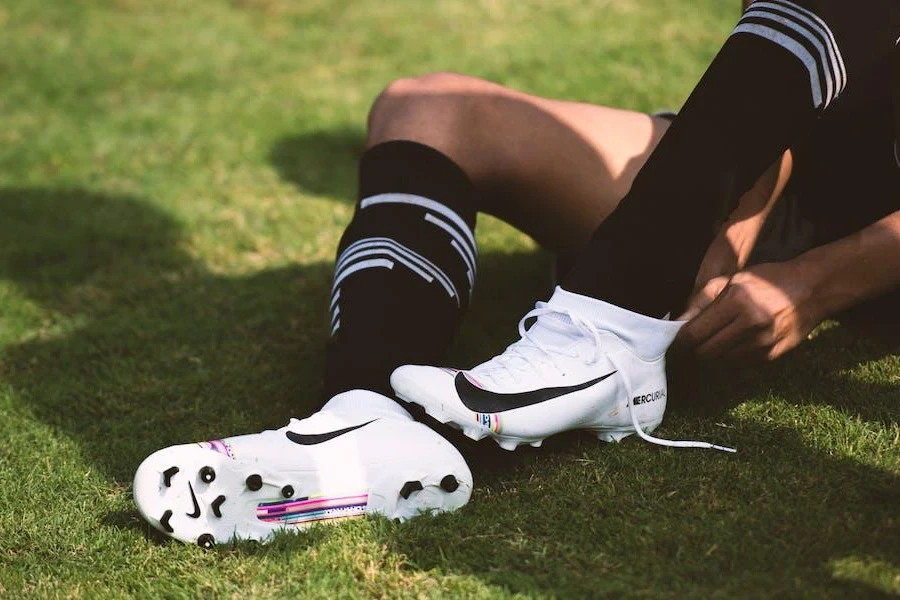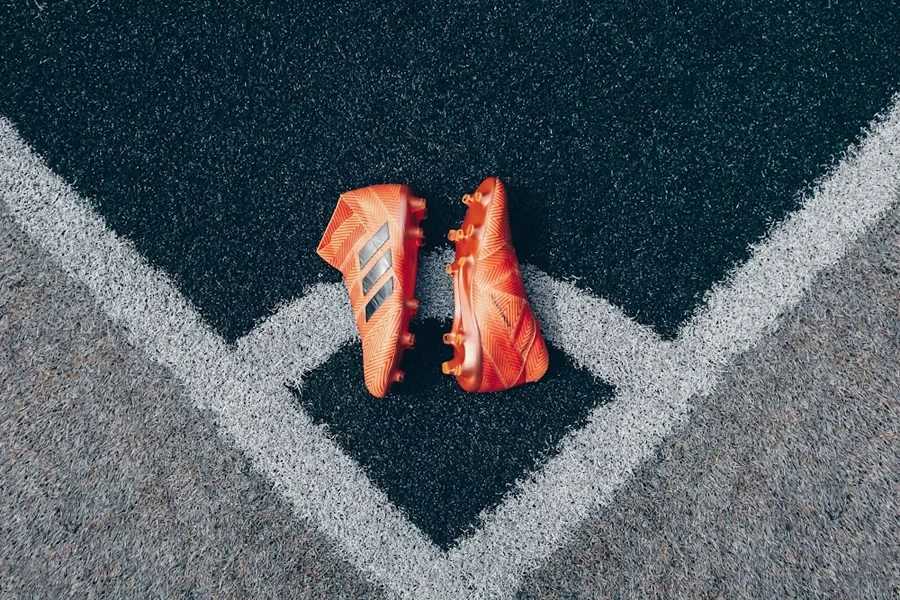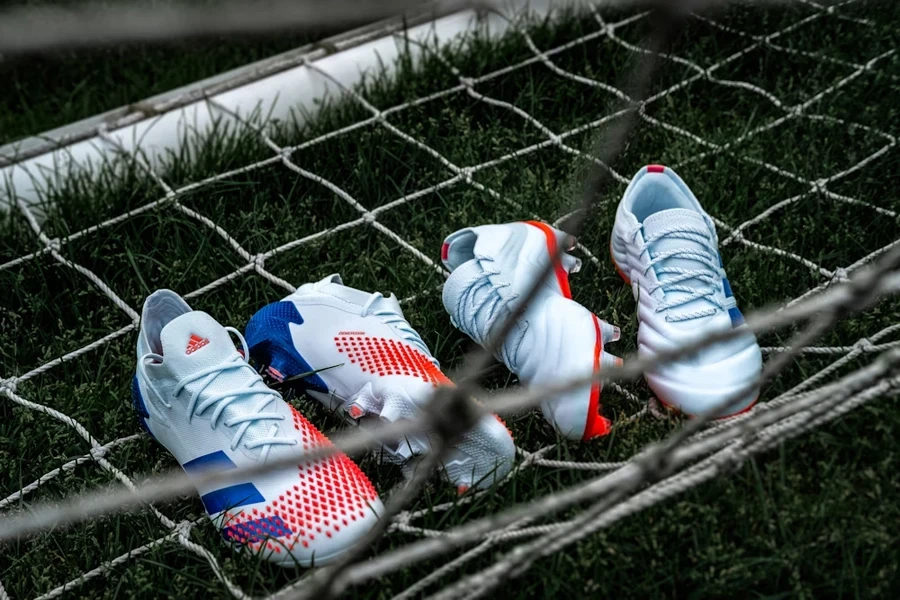Soccer is the most popular sport in the world! Clearly, the delight of controlling the ball and scoring a goal remains undefeated. However, players need more than speed and dexterity to show skillful moves—they also need soccer cleats.
Soccer footwear has so much variety in the 2020s compared to earlier generations. Now, consumers do more than choose according to aesthetics.
Thankfully, this article will highlight the most critical requirements players look for when shopping for soccer footwear in 2024.
Table of Contents
How big is the soccer footwear market?
What to consider when stocking up on soccer footwear
Top soccer shoes with standout features in 2024
Bottom line
How big is the soccer footwear market?
The soccer footwear market is huge, with experts valuing it at US $19.07 billion in 2022. Forecasts for the market also show it will reach US $28.9 billion at a 5.3% compound annual growth rate (CAGR).
The soccer footwear market owes its impressive growth to increasing player participation at various levels, increased spending on soccer shoes, and the better availability of soccer infrastructure. Experts also expect the rising popularity of soccer, growing health consciousness, and the trend of soccer as an athletic activity to boost demand.
In the above report, firm ground soccer footwear emerged as the largest segment, with over 50.0% revenue share. Multi-ground/ground soccer footwear will register the highest CAGR (6.4%). Also, Europe dominates the soccer footwear market with over 30.0% of the revenue share, while the Middle East and Africa will register the fastest CAGR (6.2%) over the forecast period.
What to consider when stocking up on soccer footwear
Playing surface

Before other factors come into play, players will first choose shoes based on their playing surface. In this regard, players can choose from five different cleats. Check the table below for more details.
| Playing surface cleats | Description |
| Firm ground cleats | These are the most common types of soccer shoes. Manufacturers build them for traction, speed, and stability on natural grass fields, making them perfect for outdoor play. In addition, firm ground cleats come with pronounced conical or bladed studs. That’s how they easily dig into soils to provide all their benefits on natural ground. |
| Artificial grass cleats | Players turn to these cleats when the playing field changes to long-bladed artificial grass fields. They have more conical studs and shorter overall designs for even weight distribution. Firm ground cleats simply won’t cut it for these fields. Players will be at higher risk of injury and suffer from reduced mobility. However, AG cleats provide the best speed, traction, and stability for shallow fields. |
| Multi ground cleats | What if players don’t want to change shoes for each playing field? They can choose multi-ground cleats. These soccer shoes can handle playing on both natural and artificial fields. How? MG cleats have short-bladed and conical studs, making them perfect for dynamic experiences. They can perform well on hard outdoor surfaces and even frozen grass fields. |
| Turf shoes | Not everyone plays soccer or trains on long-bladed grass fields. Sometimes, the playing field is hot and abrasive, with short-bladed, shallow, and carpet-like grass. That’s where turf shoes shine. Turf shoes have durable, evenly distributed studs that offer the best protection on such surfaces. They also provide grip and control while emphasizing comfort with cushioning. |
| Indoor soccer shoes | Some people also play soccer indoors and need the right shoes, as the above cleats won’t cut it. Indoor soccer shoes resemble regular sneakers but have specially designed soles for increased traction and grip. They also improve flexibility and comfort while preventing players from leaving marks on the playing surface. Plus, these soccer shoes look great off-field, too! |
Size

Size is the next most important thing to consider. After all, consumers can use soccer shoes if they don’t fit. However, choosing soccer shoe sizes is a bit different from regular shoes. The right ones for consumers may not match their shoe size.
Here’s the lowdown on soccer shoe sizes: if players have broad feet, they’ll want something with a bit more width. Also, professional players often wear shoes one size too small for improved control.
Regardless, the shoes must also account for thick soccer socks. So, the safest bet is to go for soccer shoes with some growing space. Here’s a table showing different cleat size ranges and their ideal consumers.
| Size range (US Men’s) | European size | Centimeters (heel-to-toe) | Ideal consumers |
| 3.5 to 7 | 22 to 25 | 13.7 to 16.7 cm | Perfect for young children (4 to 8 years old) with growing feet. |
| 7 to 10 | 25.5 to 28 | 16.8 to 18.5 cm | Perfect for smaller-footed adults or teenagers. |
| 10 to 12 | 28.5 to 30 | 18.6 to 19.7 cm | Perfect for average-sized adults. |
| 12 to 14 | 30.5 to 32 | 19.8 to 20.9 cm | Great for adults with wider feet or those desiring a snug fit. |
| 14 to 15 | 32.5 to 33 | 21 to 21.3 cm | Perfect for adults with larger feet. |
Playing position

Players often take on various roles on the pitch, resulting in the need for different cleats for maximum performance in each position. For this reason, businesses must choose cleats according to their target playing position. Quick and offensive players will lean toward lighter cleats. They’ll choose something that gives them enough speed to charge forward and attack effectively.
On the other hand, goalkeepers prefer something with more flexibility. Their soccer shoes should have enough strength to help them launch off to make those crucial saves. What about the defensive players? They’ll demand more heavy-duty and thicker boots.
Defender cleats provide more grunt, allowing these players to employ effective defensive maneuvers. Lastly, midfielders prefer shoes that provide the best of all worlds. They’ll look for cleats with the necessary features for speed and protection.
Footwear material

Originally, manufacturers made soccer shoes from leather, usually kangaroo or calfskin. However, technological advances have evolved boot designs, allowing manufacturers to expand into other materials for cleats.
Now, sellers can offer football shoes made from three different materials: leather, synthetic, and knitted. Each has pros and cons, with the best choice boiling down to personal comfort and positional expectations.
| Material type | Description |
| Leather | Soccer shoes made from leather are incredibly sturdy and durable. However, they may require additional care to maintain performance. |
| Synthetic boots | These soccer shoes offer lighter designs while maintaining traditional styles. Plus, synthetic soccer shoes provide better flexibility. |
| Knitted shoes | These are advanced shoes. Manufacturers weave cutting-edge microfibers to create super-lightweight shoes offering maximum speed, sacrificing durability for increased pace. |
Top soccer shoes with standout features in 2024
Nike Mercurial Superfly 9 Elite
This top-of-the-line boot boasts an ultra-lightweight Flyknit design that feels like a second skin. For this reason, players can enjoy explosive speed and agility! Their bottom part features Aerowtrac plates with chevron-shaped studs, allowing players to dig in for lightning-fast acceleration and sharp cuts.
Adidas x Speedflow+
These boots have laceless designs that minimize distractions while offering snug, sock-like fits. Their Carbitex Speedframe provides impressive stability and propulsion, making these boots perfect for speedsters. Their designs also come with lightweight TPU outsoles with strategically placed studs, ensuring optimal grip for quick direction changes.
Puma Ultra Ultimate FG/AG
The FG/AG boot features a super-thin, woven design that provides a barefoot-like feel. This standout design provides exceptional ball control with minimal gaps for errors. The boot’s lightweight outsoles come with conical and bladed studs, offering flexibility and grip for precise maneuvers.
Adidas Copa Sense+
Made from premium kangaroo leather, this boot offers an unparalleled soft touch and exceptional comfort. Their upper designs can easily adapt to the wearer’s foot shape, providing a locked-in feel. Similarly, they feature flexible outsoles with rounded studs, allowing for smooth control and passing.
Nike Tiempo Legend 9 Club MG
This versatile boot strikes a perfect balance between comfort, touch, and durability. Made from soft calf leather, it provides a cushioned feel and great ball control. The standout feature of the Nike Tiempo is its multi-ground outsoles with conical studs, which offer reliable traction on various surfaces.
Bottom line
Soccer shoes are critical to a player’s performance, so sellers must consider various factors before selling them. However, don’t forget aesthetics when stocking soccer shoes.
Not everyone is ready to sacrifice good looks for functionality. They’ll want the perfect blend of both. So, while considering size, playing surface, material, and plating position, factor in how good the shoe looks, too! It’ll help attract more consumers (beginners and experienced) in 2024.




